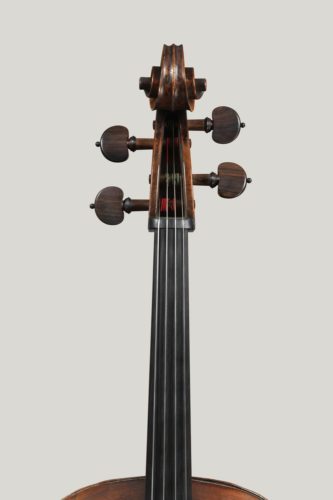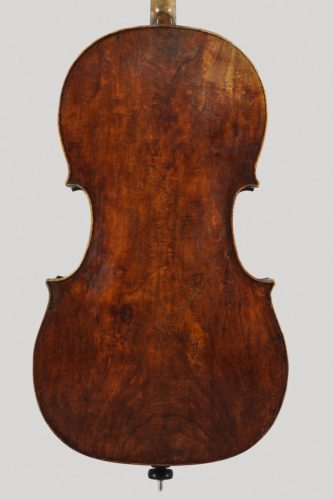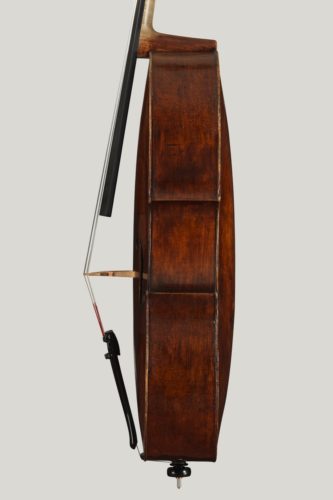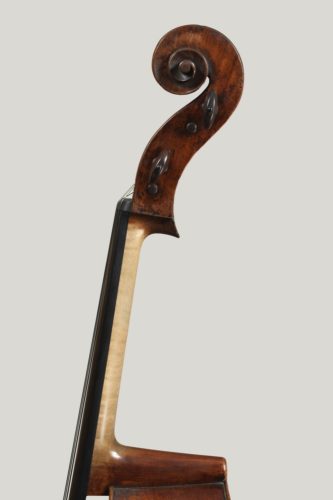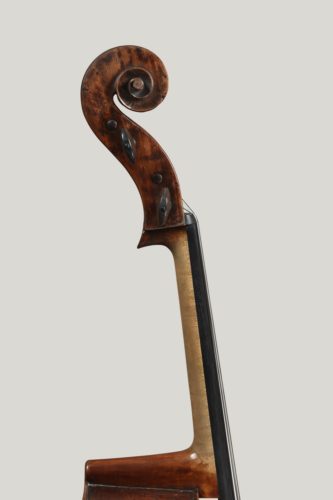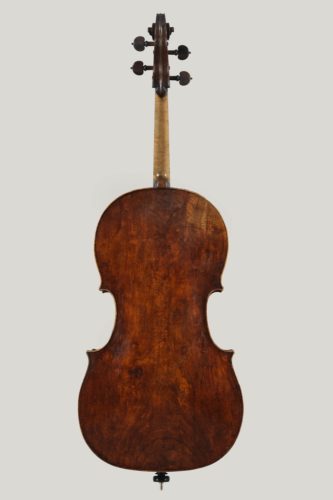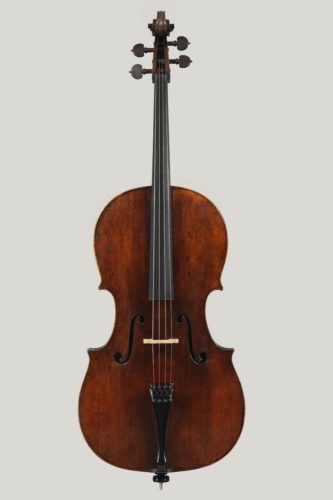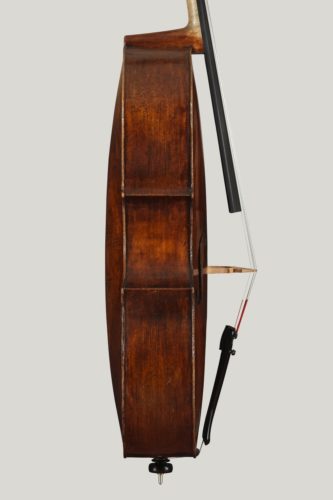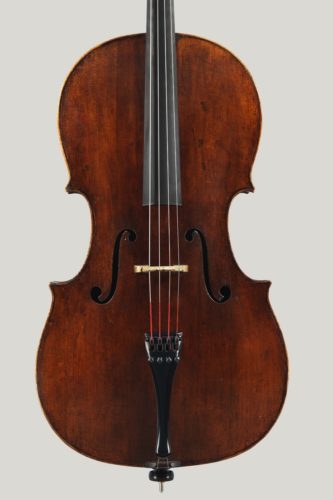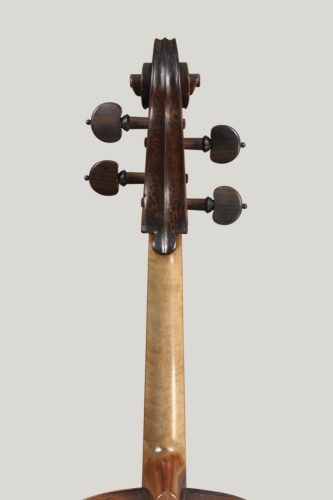Francesco Rugeri
Cello made by Fransesco Rugeri in Cremona in 1690. Johannes Martens plays on this instrument.
This cello makes a fine companion piece to the other Rugeris in the Dextra Musica collection, and comes from the same period, around 1680-90.
The consistency of his work is remarkable, and the quality of these cellos is unstinting. What best distinguishes the three instruments from each other is the wood used in their construction. In this case Rugeri again made use of soft poplar, but the back is made from one large slab-cut piece, which has a light and variable figure. Poplar trees grow quickly to a large girth, and unblemished pieces large enough to provide a full width cello back are rare, although not so rare as similarly wide maple boards. The same wood is again used on the ribs, but poplar is by nature more fragile than maple and is therefore not so well suited for this task; the deep, thinly cut sides of the cello are particularly vulnerable to damage. Makers using poplar for the backs of cellos often substitute more durable beech or maple for the ribs. For the head Rugeri has used walnut, a very unusual choice, with distinctive grain structure and dark colouration.
Cremonese makers never swayed from the use of mountain-grown spruce for the fronts of their instruments. The unique quality of the slow-growing, high altitude softwood proved ideal for resonance in musical instruments, and this cello is no exception. Modern analytical techniques have shown the origins and age of the spruce used; they indicate strongly that all the makers of Cremona took their wood from the same source, and often many instruments can be shown to have come from the same tree. In most cases it seems as if the wood was used in quite fresh state, contradicting centuries of tradition that musical instruments were made from long-seasoned timber. For this instrument Rugeri was not so fortunate with his supply of spruce, and three narrow boards have been jointed together and augmented with separate edge pieces in the upper and lower bouts to make up the necessary width.
The stylistic markers of Rugeri’s work are plentiful, and here again are the finely cut soundholes with large circles and rather short upper wings. The arching is full and broad, with only a light channel around the perimeter, but finely worked edges and beautifully inlaid purfling. The arch of the back shows some distortion, especially where the soft poplar wood has given way to the pressure of the soundpost and the downward tension of the strings through the bridge. The head provides a clear view of Rugeri’s personal mannerisms. The form is particularly elegant, with a deep pegbox surmounted by a large head with open turns and a delicate chamfer. The last turn up into the eye is cut with particular grace and exaggerated depth, while the undercut around the first volute is left flat. The modelling is not unerringly accurate, but beautifully finished and artistically conceived and executed.

Johannes Martens
Johannes Martens is playing in the Oslo Philharmonic Orchestra, and is also a member of Cikada Ensemble and Cikada String Quartet. (Photo: Bo Mathisen)
